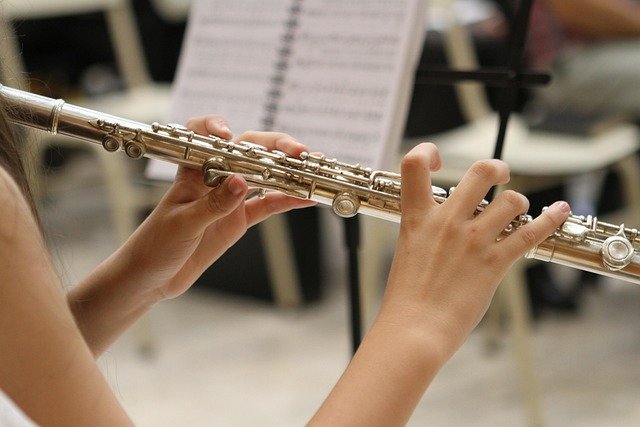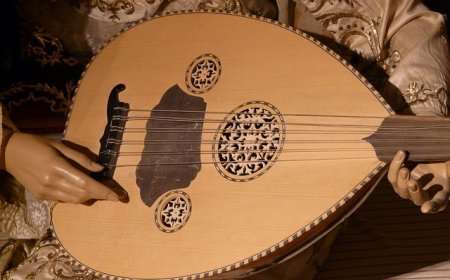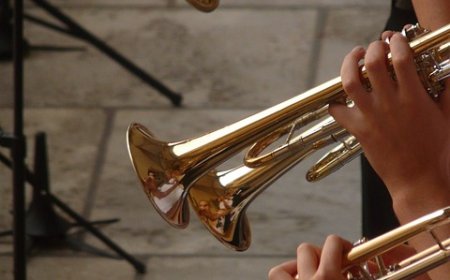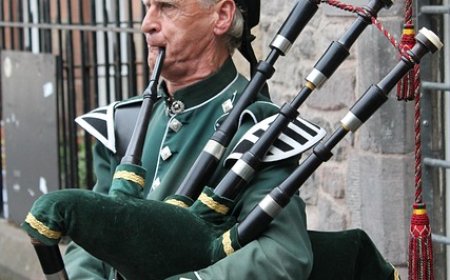Flute Facts for Students | Learn How the Flute Works & Its History
Explore how the flute works, its history, parts, famous flutists, and more. A beginner-friendly guide for students interested in this beautiful woodwind instrument.

🎼 All About the Flute
🥇 Introduction
The flute is a graceful, elegant instrument with a light, airy sound that can float above the rest of the orchestra or band. It belongs to the woodwind family, but unlike most woodwinds, it doesn’t use a reed. Instead, the flute makes sound when the player blows across a small opening—like blowing across the top of a bottle. The flute can play very fast, high, and bright melodies, and is used in everything from classical orchestras to school bands, movie soundtracks, and pop music.
🎶 What Is a Flute?
A flute is a woodwind instrument that produces sound through airflow, not reeds. The player blows across a hole in the mouthpiece called the embouchure hole, and the air splits on the edge, creating a vibration. This vibration travels through the tube of the flute and creates sound.
The concert flute (also called the Western or transverse flute) is the most common type and is usually made of metal—like silver, nickel, or gold-plated brass. It plays in the key of C and has a very wide range, from low and mellow to high and sparkling.
🧩 Parts of the Flute
The modern flute has three main sections that fit together:
-
Headjoint – This is the top part of the flute. It contains the embouchure hole, where the player blows air. Some flutes also have a lip plate to help guide the player's mouth position.
-
Body – This is the middle section and the longest part. It has most of the keys and tone holes. The player’s left and right fingers press the keys to change the pitch.
-
Footjoint – This is the bottom section. It has a few extra keys that allow the player to play the flute’s lowest notes.
Flutes also have springs, pads, and rods that help the keys move and seal properly. Keeping all the parts clean and well-adjusted is important for good sound and technique.
⚙️ How Does the Flute Work?
The flute works when the player blows a stream of air across the embouchure hole on the headjoint. The air hits the edge of the hole and splits, causing the air inside the flute’s tube to vibrate. This creates sound.
To change notes, the player opens and closes different keys on the body and footjoint using their fingers. Closing more keys makes the flute sound lower. Opening more keys makes it sound higher. Players must also shape their lips (their embouchure) and use breath control to keep the sound in tune and clear.
The flute’s tone can change based on the strength of the air, how tight the lips are, and how the keys are pressed. It takes time to master, but the flute is one of the most expressive and agile instruments in music.
📜 History of the Flute
The flute is one of the oldest instruments in the world. Ancient flutes have been found in China, India, Egypt, and Greece, some made from bones or bamboo, dating back over 5,000 years.
The flute as we know it today began to take shape in Europe during the Baroque era. Early flutes were made of wood and had few keys, which limited how many notes they could play. Over time, instrument makers improved the flute’s design by adding more keys for better pitch and flexibility.
In the 1800s, a German inventor named Theobald Boehm created the modern flute with a new key system and a metal body. His design made the flute easier to play in tune and gave it a clearer sound. Today, flutes are used in classical music, concert bands, jazz, folk, and even pop songs.
🎷 Famous Flute Players
Many talented flutists have made this instrument shine on the world stage. Here are some of the most famous:
-
Jean-Pierre Rampal – A French flute soloist who brought the flute to the world stage in the 20th century
-
James Galway – An Irish flutist known for his golden tone and international performances
-
Emmanuel Pahud – A principal flutist with the Berlin Philharmonic and soloist known for technical brilliance
-
Jeanne Baxtresser – Former principal flute of the New York Philharmonic and educator
-
Herbie Mann – A jazz flutist who helped bring the flute into popular music
These flutists have shown how expressive, powerful, and fun the flute can be in any style of music.
🎶 Learning to Play the Flute
The flute is a great instrument for students who want a lightweight, portable, and versatile woodwind instrument. It’s a popular first choice in school bands and music programs because it teaches breath control, finger coordination, and musical phrasing.
Beginners start by learning how to assemble the flute, how to hold it properly, and how to blow a clean stream of air across the embouchure hole. It can be tricky at first to make a sound, but with practice, students quickly learn to play notes and simple songs.
As students improve, they learn scales, tone exercises, sight-reading, and more challenging band pieces. Flutists can join school bands, youth orchestras, chamber groups, and even play solos or duets. With dedication, flute players can develop a beautiful, flexible tone that works in many musical settings.
😄 Fun Facts About Flutes
Here are some fun and surprising facts about the flute:
-
The flute is one of the only woodwind instruments that doesn’t use a reed.
-
Ancient flutes have been made from bones, bamboo, and ivory.
-
The piccolo is a small, high-pitched cousin of the flute.
-
A skilled flutist can play faster passages than most other instruments.
-
Flutes can be made from silver, gold, platinum, or nickel-silver alloy.
-
There are flutes in many sizes, including the bass flute and contrabass flute!
👧 Kid-Friendly Summary
The flute is a shiny metal instrument that you hold sideways and blow across to make sound—kind of like blowing across a bottle top. You press keys with your fingers to play different notes. The flute sounds light and beautiful and is used in bands, orchestras, and even pop songs. If you want an instrument that’s graceful, fun, and lets you play high, fast music, the flute is a great choice!
📚 Vocabulary Words
Flute – A woodwind instrument played by blowing across a hole instead of using a reed
Embouchure – The way your lips and mouth are shaped to play a wind instrument
Headjoint – The top part of the flute that contains the embouchure hole
Tone hole – A hole that can be opened or closed to change the pitch
Lip plate – The place on the headjoint where the player rests their bottom lip
Footjoint – The lowest part of the flute, containing keys for low notes
Register – A range of notes, such as low, middle, or high
Piccolo – A smaller, higher-sounding flute
❓ Interactive Quiz
1. How does a flute make sound?
A. By blowing into a reed
B. By hitting it
C. By blowing across a hole
D. By plucking a string
2. What is the top part of the flute called?
A. Footjoint
B. Bell
C. Headjoint
D. Valve
3. What is a piccolo?
A. A type of clarinet
B. A large drum
C. A small flute that plays higher
D. A piano pedal
4. Who invented the modern flute design?
A. Mozart
B. Johann Sebastian Bach
C. Theobald Boehm
D. Louis Armstrong
5. What material is a modern flute usually made from?
A. Wood
B. Plastic
C. Metal ✅
D. Glass





















































